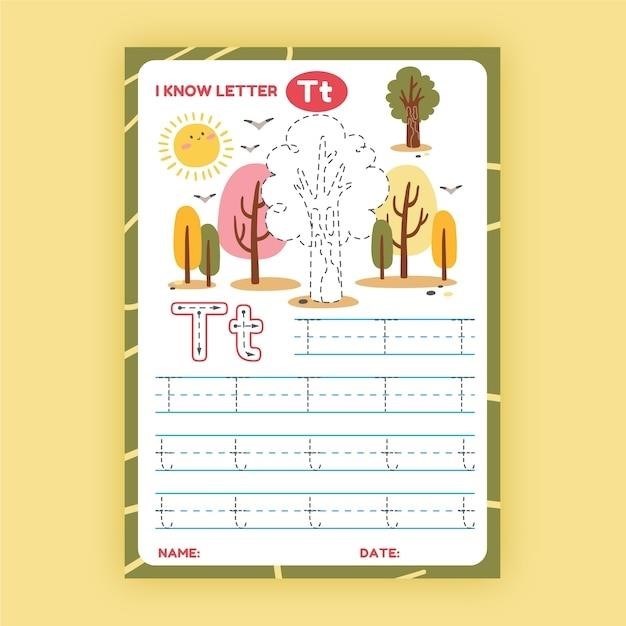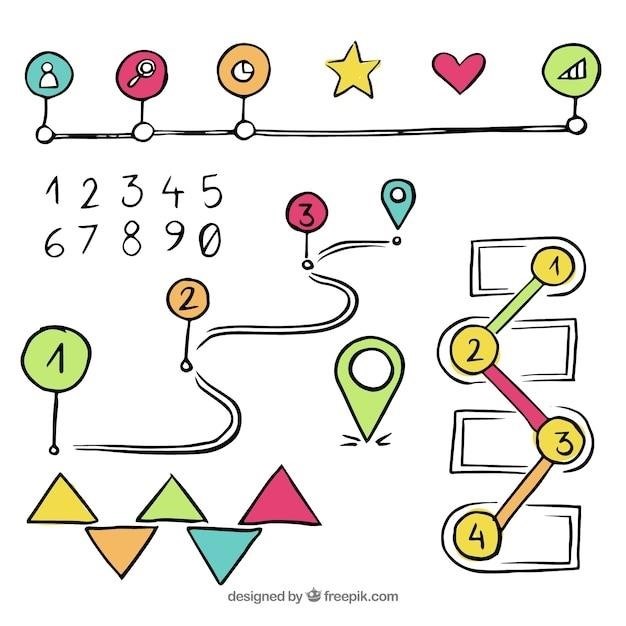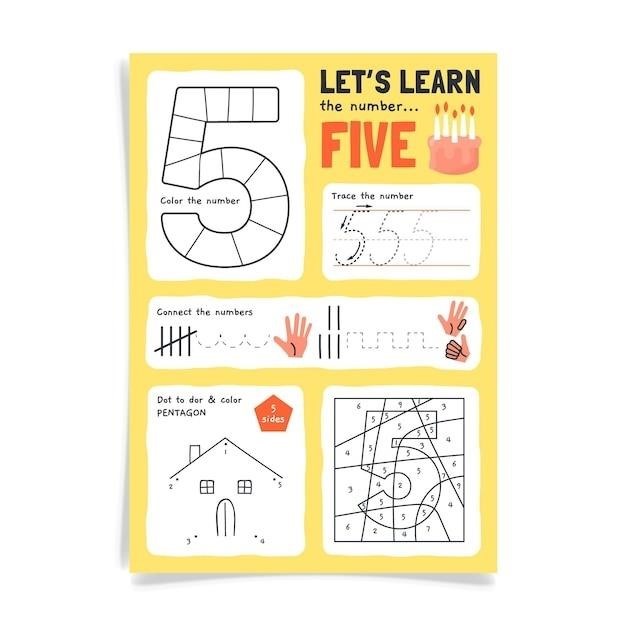

Printable Map Skills Worksheets⁚ A Comprehensive Guide
Discover a wealth of free printable map skills worksheets in PDF format, perfect for enhancing geographical understanding. These resources cover diverse skill levels, from basic map reading to advanced techniques like interpreting contour lines. Engage students with interactive exercises and assessments.
Types of Map Skills Worksheets Available

A wide variety of printable map skills worksheets cater to different learning styles and grade levels. You’ll find worksheets focusing on specific map elements like compass directions (cardinal and intermediate points), map scales and distance calculations, and interpreting map symbols and legends. Others emphasize locating places using grid references and coordinates, a crucial skill for navigation and geographical understanding. Some worksheets incorporate real-world scenarios, asking students to plan routes or identify locations based on provided information. Hands-on activities, such as creating your own maps based on observations or descriptions, encourage a deeper engagement with mapmaking principles. For advanced learners, worksheets incorporating contour lines and elevation provide a challenge, fostering a more nuanced comprehension of topography and three-dimensional representation. The availability of differentiated worksheets ensures that students of all abilities can find engaging and appropriately challenging activities.
Locating Places on a Map Using Grid References and Coordinates
Mastering grid references and coordinates is fundamental to map reading. Printable worksheets offer ample practice in this crucial skill. Exercises often involve identifying locations using a grid system overlaid on a map, requiring students to translate grid references (e.g., A3, B5) into precise locations. Conversely, worksheets might present a location and ask students to determine its corresponding grid reference, reinforcing the relationship between spatial position and alphanumeric codes. Some worksheets introduce the concept of coordinates using latitude and longitude, enhancing understanding of global positioning systems (GPS). These activities often involve interpreting maps of varying scales and complexities, building proficiency in accurately locating points of interest. The use of real-world examples, like locating cities on a world map using latitude and longitude or finding specific features on a local topographic map using grid references, reinforces the practical applications of these skills.
Understanding Map Symbols and Legends
Map symbols and legends are crucial for interpreting map information effectively. Printable worksheets provide targeted practice in deciphering these visual cues. Students learn to associate specific symbols with real-world features, such as a tree representing a forest, a blue line indicating a river, or a star marking a capital city. Worksheets often present maps with various symbols and require students to identify the features they represent using the accompanying legend. More advanced worksheets might include interpreting maps with a complex key, involving different symbol types and sizes, or maps with symbols representing different aspects of a landscape (e.g., elevation, vegetation, population density). These exercises cultivate crucial skills in visual literacy and spatial reasoning. Understanding map symbols enhances the ability to extract meaningful information from geographical representations and apply that knowledge to various contexts, including navigation and environmental studies.
Interpreting Map Scales and Distances
Mastering map scale is fundamental to understanding distances represented on a map. Printable worksheets offer excellent practice in this area, presenting maps with varying scales (e.g., 1⁚100,000, 1⁚1,000,000). Students learn to calculate real-world distances based on the map scale, using rulers or measuring tools. Exercises might involve measuring distances between two points on a map and then converting that measurement to the actual distance using the provided scale. Conversely, students could be given a real-world distance and asked to determine the corresponding distance on a map with a specific scale. These exercises build critical problem-solving skills and reinforce the concept of proportional reasoning. Understanding map scales allows for accurate estimations of travel times, distances between locations, and the overall spatial relationships between different geographical features, enhancing comprehension of geographical information.
Using Compass Directions (Cardinal and Intermediate)
Printable map skills worksheets provide invaluable practice in understanding and applying compass directions. Students learn to identify cardinal directions (North, South, East, West) and intermediate directions (Northeast, Southeast, Northwest, Southwest) on a compass rose. Exercises might involve plotting routes based on given compass directions, determining the direction of travel between two points, or identifying locations relative to a reference point using compass bearings. Worksheets often feature maps with marked locations and require students to specify directions between these locations, strengthening their understanding of directional terminology and spatial relationships. Advanced worksheets might introduce the use of three-figure bearings for more precise direction-finding. These exercises are essential for developing spatial awareness and interpreting directional information presented on maps, crucial skills applicable to various contexts, from navigation to geography.
Creating Your Own Maps⁚ A Hands-On Activity
Transitioning from interpreting maps to creating them solidifies understanding. Printable worksheets guide students through the mapmaking process, fostering creativity and practical application of learned skills. These activities often involve sketching a familiar area like a classroom or schoolyard, requiring them to choose a suitable scale and incorporate key features. Students learn to select appropriate map symbols and create a legend explaining their use. The process emphasizes observation, measurement, and spatial reasoning. They must consider the placement of landmarks, pathways, and other relevant details, ensuring accurate representation. This hands-on approach enhances comprehension of map elements and their functions. Creating maps allows for self-expression and problem-solving, bridging theoretical knowledge with practical application. The resulting maps serve as tangible demonstrations of acquired map skills and spatial reasoning abilities.
Advanced Map Skills⁚ Contour Lines and Elevation
For older students, printable worksheets introduce the complexities of contour lines and elevation. These lines represent points of equal elevation on a map, providing a three-dimensional representation of the terrain. Understanding contour lines allows students to visualize slopes, valleys, hills, and mountains. Worksheets often include exercises requiring students to interpret contour line patterns to determine the steepness of slopes, identify high and low points, and estimate elevation changes. They might also involve creating their own contour maps from given elevation data or cross-sections. These activities help students develop spatial reasoning skills and understand the relationship between two-dimensional maps and three-dimensional landscapes. The ability to interpret contour lines is crucial for various fields, including geography, surveying, and environmental science, making these worksheets valuable learning tools.
Finding Resources⁚ Websites and Online Databases
The internet offers a treasure trove of resources for printable map skills worksheets. Educational websites, such as Education World and Teachers Pay Teachers, provide free and paid downloadable worksheets catering to various age groups and skill levels. Many websites specialize in creating educational materials, offering a wide selection of map-related activities, including those focusing on specific geographical areas or map types. Online databases, often linked to educational institutions or geographical societies, might contain extensive collections of printable map exercises and supplementary materials. Searching for terms like “printable map skills worksheets PDF,” “map reading activities,” or “geography worksheets” will yield numerous results. Remember to carefully evaluate the quality and suitability of the resources found, considering factors like the clarity of instructions, the accuracy of the maps, and the alignment with curriculum standards. Always preview before printing to ensure suitability for your needs.
Utilizing Map Skills Worksheets in the Classroom
Printable map skills worksheets are invaluable tools for enriching geography lessons. Incorporate them into your curriculum to reinforce concepts taught during lectures or field trips. Worksheets can serve as pre- or post-lesson activities, allowing students to apply newly acquired knowledge or review previously learned material. Differentiation is key; select worksheets aligning with diverse learning styles and abilities within your classroom. Consider using them in small group activities to encourage collaborative learning and peer teaching. Incorporate real-world applications by connecting map skills to current events or local geography. Encourage creativity by having students create their own maps based on familiar locations or imaginary landscapes. Regularly assess student progress through worksheet activities, providing constructive feedback to help students improve their map-reading and interpretation skills. Remember to integrate these worksheets strategically for maximum impact on student learning outcomes.
Assessing Student Understanding and Progress
Effective assessment is crucial when using printable map skills worksheets. Employ a variety of assessment methods to gain a comprehensive understanding of student learning. Begin by analyzing completed worksheets, noting accuracy in identifying locations, interpreting symbols, and using scales. Observe students’ problem-solving approaches during independent work or group activities. Consider incorporating formative assessments throughout the learning process, providing immediate feedback and opportunities for improvement. Summative assessments, such as quizzes or tests, can gauge overall understanding. Qualitative data can be collected through student self-reflection or teacher observations, providing insights into students’ confidence and challenges. Use data collected to inform future instruction, tailoring activities to address specific areas needing improvement. Remember, the goal is not just to assess knowledge but to foster a deeper understanding of map skills and their real-world applications. Regular monitoring and adjustments to teaching strategies based on assessment results will ensure effective learning.